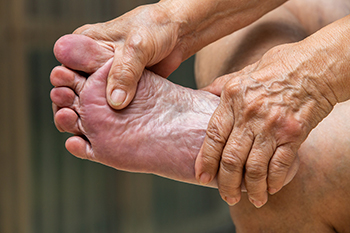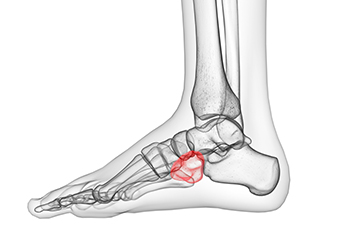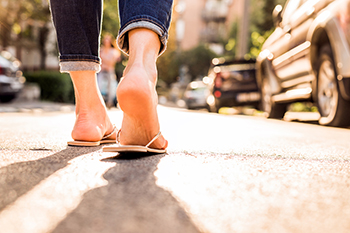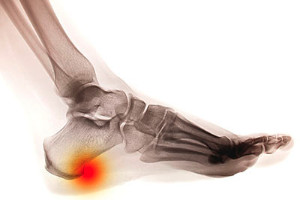Stuart (772) 223-8313Rate Us
Jupiter (561) 744-6683Rate Us
Stuart (772) 223-8313Rate Us
Jupiter (561) 744-6683Rate Us

Corns are defined as small, but bothersome, patches of thickened skin, which can quietly disrupt our daily stride. These localized areas of pressure and friction often develop on the feet, particularly over areas that constantly rub against footwear. They are the skin's natural response to protect itself from irritation. However, when left untreated, corns can cause pain and discomfort. Prevention is the key to keeping corns at bay. Choosing shoes that fit well with ample toe room and cushioning can minimize friction. Regularly moisturizing the feet can help to keep skin supple and less prone to developing corns. Wearing orthotic inserts can help to provide proper arch support in addition to distributing pressure evenly. It is beneficial to recognize the importance of preventing corns on the feet, ensuring that each step remains comfortable and pain-free. If you have problematic corns on your feet, it is suggested that you consult with a podiatrist for effective relief options.
If you have any concerns regarding your feet and ankles, contact one of our podiatrists of Advanced Foot & Ankle Specialists, PA. Our doctors will treat your foot and ankle needs.
Corns: What Are They? and How Do You Get Rid of Them?
Corns can be described as areas of the skin that have thickened to the point of becoming painful or irritating. They are often layers and layers of the skin that have become dry and rough, and are normally smaller than calluses.
Ways to Prevent Corns
There are many ways to get rid of painful corns such as wearing:
Treating Corns
Treatment of corns involves removing the dead skin that has built up in the specific area of the foot. Consult with Our doctors to determine the best treatment option for your case of corns.
If you have any questions please feel free to contact one of our offices located in Stuart and Jupiter, FL . We offer the newest diagnostic and treatment technologies for all your foot and ankle needs.

As we gracefully age, caring for our feet becomes an integral aspect of maintaining overall well-being. Elderly foot care is more than just a routine, it is a necessary practice that enhances mobility and quality of life. Regularly inspecting feet for any changes, such as cuts, blisters, or swelling, is a fundamental step. Proper hygiene, including thorough cleaning and drying, can help to prevent infections. Moisturizing keeps the skin supple and minimizes discomfort that is related to dryness. Choosing comfortable and supportive footwear, with cushioning and appropriate arch support, is vital to prevent foot pain. Trimming the toenails with care and seeking professional assistance for any foot concerns ensures comprehensive foot health. By embracing these tips, seniors can stride confidently and comfortably through the years, nurturing their feet as they continue their journey of graceful aging. If you would like additional tips on proper foot care for elderly people, it is suggested that you confer with a podiatrist.
Proper foot care is something many older adults forget to consider. If you have any concerns about your feet and ankles, contact one of our podiatrists from Advanced Foot & Ankle Specialists, PA. Our doctors can provide the care you need to keep you pain-free and on your feet.
The Elderly and Their Feet
As we age we start to notice many changes in our body, but the elder population may not notice them right away. Medical conditions may prevent the elderly to take notice of their foot health right away. Poor vision is a lead contributor to not taking action for the elderly.
Common Conditions
Susceptible Infections
Diabetes and poor circulation can cause general loss of sensitivity over the years, turning a simple cut into a serious issue.
If you have any questions please feel free to contact one of our offices located in Stuart and Jupiter, FL . We offer the newest diagnostic and treatment technologies for all your foot and ankle needs.

Cuboid syndrome is a painful foot condition that can significantly disrupt mobility and daily activities. It occurs when the cuboid bone becomes displaced. The exact cause of cuboid syndrome is often attributed to sudden or excessive forces applied to the foot during activities such as running, jumping, or rolling the ankle. Athletes and individuals who engage in high-impact sports or activities are at a higher risk for this condition due to the repetitive stress placed on the foot. Additionally, people who have flat feet or those who wear poorly fitting shoes may also be prone to developing cuboid syndrome. Recognizing and addressing these risk factors is crucial in preventing the occurrence of cuboid syndrome and maintaining optimal foot health. Seeking professional care promptly is essential for an accurate diagnosis and appropriate treatment to ensure a swift recovery. If you have pain in the outer part of your foot, it is strongly suggested that you speak with a podiatrist who can diagnose and treat cuboid syndrome.
Cuboid syndrome, also known as cuboid subluxation, occurs when the joints and ligaments near the cuboid bone in the foot become torn. If you have cuboid syndrome, consult with one of our podiatrists from Advanced Foot & Ankle Specialists, PA. Our doctors will assess your condition and provide you with quality foot and ankle treatment.
Cuboid syndrome is a common cause of lateral foot pain, which is pain on the outside of the foot. The condition may happen suddenly due to an ankle sprain, or it may develop slowly overtime from repetitive tension through the bone and surrounding structures.
Causes
The most common causes of cuboid syndrome include:
Symptoms
A common symptom of cuboid syndrome is pain along the outside of the foot which can be felt in the ankle and toes. This pain may create walking difficulties and may cause those with the condition to walk with a limp.
Diagnosis
Diagnosis of cuboid syndrome is often difficult, and it is often misdiagnosed. X-rays, MRIs and CT scans often fail to properly show the cuboid subluxation. Although there isn’t a specific test used to diagnose cuboid syndrome, your podiatrist will usually check if pain is felt while pressing firmly on the cuboid bone of your foot.
Treatment
Just as the range of causes varies widely, so do treatments. Some more common treatments are ice therapy, rest, exercise, taping, and orthotics.
If you have any questions, please feel free to contact one of our offices located in Stuart and Jupiter, FL . We offer the newest diagnostic and treatment technologies for all your foot care needs.
 Wearing flip-flops is a popular thing to do in the summer months. They are easy to wear and come in many different materials and colors. Ideally, they are meant to be worn to the beach and pool areas, however, many people enjoy their simplicity and choose to wear them while accomplishing daily tasks. When flip flops are frequently worn, the walking style or gait may change as the foot muscles adapt to ensure the shoe is comfortable. Blisters may form, toenail fungus and athletes’ foot may develop, and heel pain may ensue. There is generally minimal padding on the heels of flip flops, and ongoing heel pain may indicate plantar fasciitis or that a heel spur has occurred. Additionally, hammertoe may develop as the toes continuously scrunch together to keep the shoe on the foot. Cracked heels are another condition that can happen from wearing shoes that do not have a back, and it is helpful to moisturize the feet more often when these types of shoes are worn. If you have concerns about wearing flip-flops, it is suggested that you confer with a podiatrist who can answer any questions you may have.
Wearing flip-flops is a popular thing to do in the summer months. They are easy to wear and come in many different materials and colors. Ideally, they are meant to be worn to the beach and pool areas, however, many people enjoy their simplicity and choose to wear them while accomplishing daily tasks. When flip flops are frequently worn, the walking style or gait may change as the foot muscles adapt to ensure the shoe is comfortable. Blisters may form, toenail fungus and athletes’ foot may develop, and heel pain may ensue. There is generally minimal padding on the heels of flip flops, and ongoing heel pain may indicate plantar fasciitis or that a heel spur has occurred. Additionally, hammertoe may develop as the toes continuously scrunch together to keep the shoe on the foot. Cracked heels are another condition that can happen from wearing shoes that do not have a back, and it is helpful to moisturize the feet more often when these types of shoes are worn. If you have concerns about wearing flip-flops, it is suggested that you confer with a podiatrist who can answer any questions you may have.
Flip-flops are not always the best choice of footwear. If you have any concerns about your feet or ankles, contact one of our podiatrists from Advanced Foot & Ankle Specialists, PA. Our doctors will assist you with all of your foot and ankle needs.
Flip-Flops and Feet
When the weather starts warming up, people enjoy wearing flip-flops. Flip-flops are comfortable, stylish, and easy to slip on and off; they're perfect for any summer beach goer. However, these shoes can cause harm to the feet.
How Can Flip-Flops Affect Me Long-Term?
Are There Injuries Associated with Flip-Flops?
Yes. Since flip-flops are relatively weak and do not provide the same amount of support as sneakers, people who wear flip-flops regularly are more susceptible to injuries. On top of that, the open nature of the shoe makes your feet more prone to other problems, such as cuts and even infections. Common injuries and ailments include:
I like Wearing Flip-Flops. Are There Safe Alternatives?
When buying flip-flops, try to find ones that have sturdy soles and that are made of high-quality materials that will support for your feet. These flip-flops will cost more but will also last longer as a result.
If you have any questions please feel free to contact one of our offices located in Stuart and Jupiter, FL . We offer the newest diagnostic and treatment technologies for all your foot and ankle needs.

Many people think there is a mystery behind what heel spurs are and why they develop. Heel spurs form when our feet endure repeated stress and strain. A heel spur is defined as a small bone that protrudes from the underside of the heel. As we grow, our bones may develop bony growths that can be common around the heels. These growths are referred to as heel spurs and can be uncomfortable. Heel spurs seem to present as a warning sign the body provides to reduce excessive pressure on the heel. Activities such as running, dancing, or even wearing unsupportive shoes can contribute to the development of a heel spur. Certain factors can increase their likelihood, such as being overweight or having abnormal walking patterns. It is beneficial to be proactive in preventing heel spurs. Effective methods can include wearing supportive shoes and practicing proper foot stretching. If you have pain in your heel, it is suggested that you visit a podiatrist who can diagnose and treat heel spurs.
Heel spurs can be incredibly painful and sometimes may make you unable to participate in physical activities. To get medical care for your heel spurs, contact one of our podiatrists from Advanced Foot & Ankle Specialists, PA. Our doctors will do everything possible to treat your condition.
Heels Spurs
Heel spurs are formed by calcium deposits on the back of the foot where the heel is. This can also be caused by small fragments of bone breaking off one section of the foot, attaching onto the back of the foot. Heel spurs can also be bone growth on the back of the foot and may grow in the direction of the arch of the foot.
Older individuals usually suffer from heel spurs and pain sometimes intensifies with age. One of the main condition's spurs are related to is plantar fasciitis.
Pain
The pain associated with spurs is often because of weight placed on the feet. When someone is walking, their entire weight is concentrated on the feet. Bone spurs then have the tendency to affect other bones and tissues around the foot. As the pain continues, the feet will become tender and sensitive over time.
Treatments
There are many ways to treat heel spurs. If one is suffering from heel spurs in conjunction with pain, there are several methods for healing. Medication, surgery, and herbal care are some options.
If you have any questions feel free to contact one of our offices located in Stuart and Jupiter, FL . We offer the latest in diagnostic and treatment technology to meet your needs.